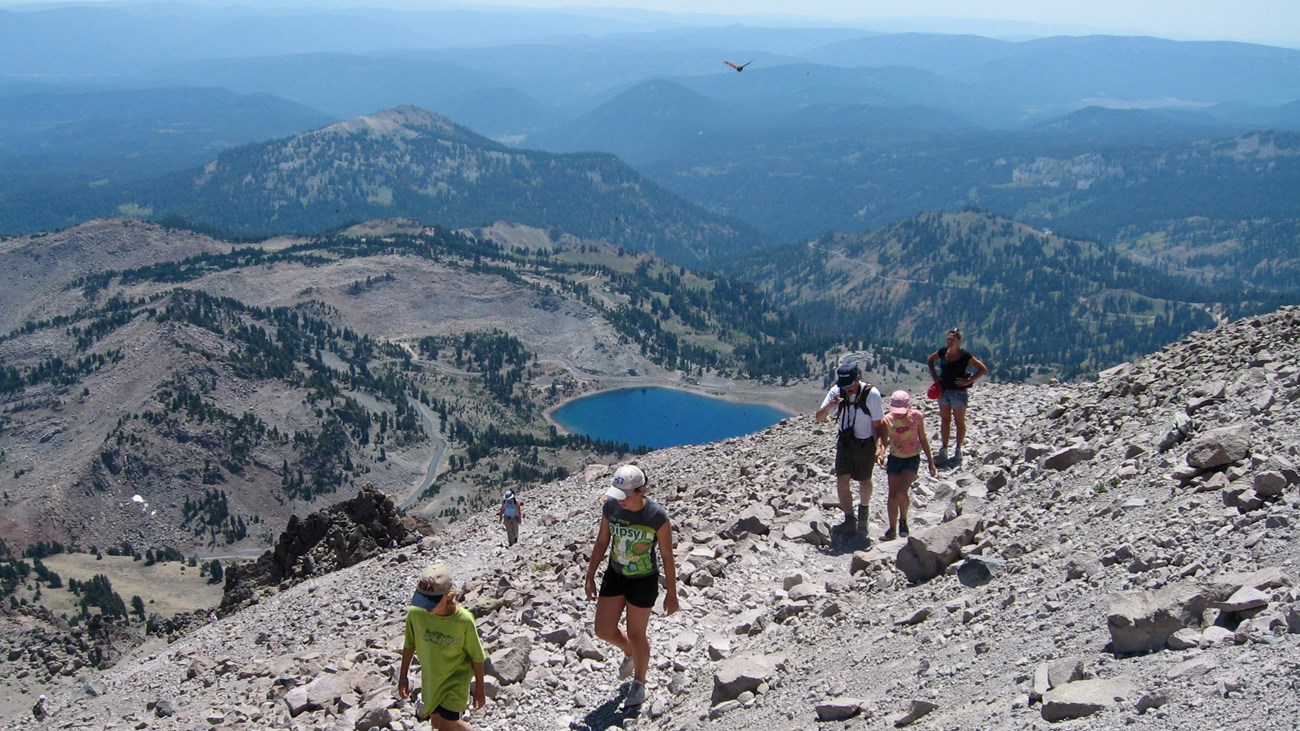Last updated: July 13, 2022
Thing to Do
Hike Lassen Peak

Start: Lassen Peak Trailhead
Level of Difficulty: Strenuous
Round-Trip Distance: 5 miles (8 km)
Time: 4-5 hours
Elevation Start/Gain: 8,500 ft (2591 m) / 1,957 ft (596 m)
Surface: Packed dirt with some lose rock from erosion
Lassen Peak Trail climbs to the summit of one of the largest plug dome volcanoes in the world. Beginning at the Lassen Peak parking area, the trail climbs through twisted mountain hemlock and whitebark pine trees on sand-like cinders. As the trees begin to thin and vistas of the park come into view, the trail steepens into series of switchbacks along a rocky ridge to the summit. The maintained trail ends at the first summit where hikers can read interpretive signs, rest, and enjoy the panoramic view. From there, hikers may continue up the steep route to the true summit or descend into the interior of the crater to explore the remnants of the dramatic eruptions that have rocked this volcano.
How to Hike This Trail Safely
Hiking Lassen Peak Trail involves risk. Learn more about general hiking safety in this high-elevation and remote park. Special considerations for this trail include:
- Snow Conditions can persist through the summer months. Wear proper footwear and consider using trekking poles to help maintain balance. Travel in the winter months requires winter backcountry travel knowledge and equipment.
- Sun Exposure is considerable on Lassen Peak Trail. Tree shade may be found in the first mile after which limited shade is available.
- Sudden Changes in weather occur frequently and snow is possible any month of the year. Get an early start to avoid afternoon storms and lightning. Carry extra layers for warmth.
- Hiking at High Elevation can aggravate pre-existing medical conditions. Know the effects of altitude. Carry plenty of water, take breaks often, and do not exceed your abilities.
Yield to Uphill Hikers
Please carefully step off to the side of trail to allow uphill hikers to pass or to stop for a break.
Please Stay on the Trail Do Not Cut Switchbacks
You can enjoy and help preserve one of the park’s oldest and most popular trails by simply staying on it. Traveling off-trail causes damage. Your footsteps can push rocks onto the trail, create pathways for water erosion, and undermine the supporting slope. See hikers straying from the trail? Speak up! A courteous reminder about why it’s important to stay on the trail is usually enough. If not, please report destructive behavior to a park ranger.
